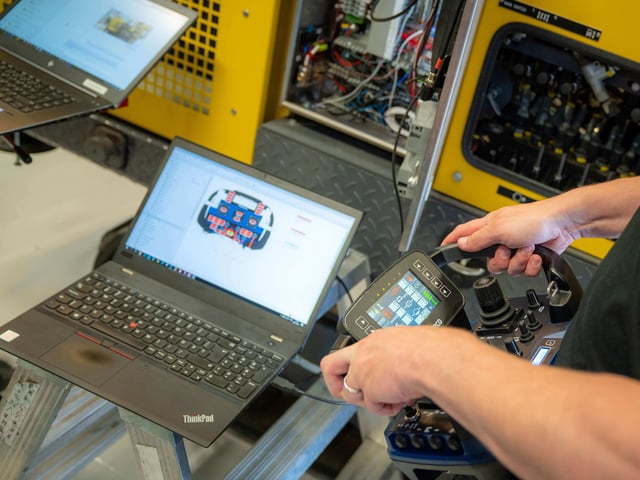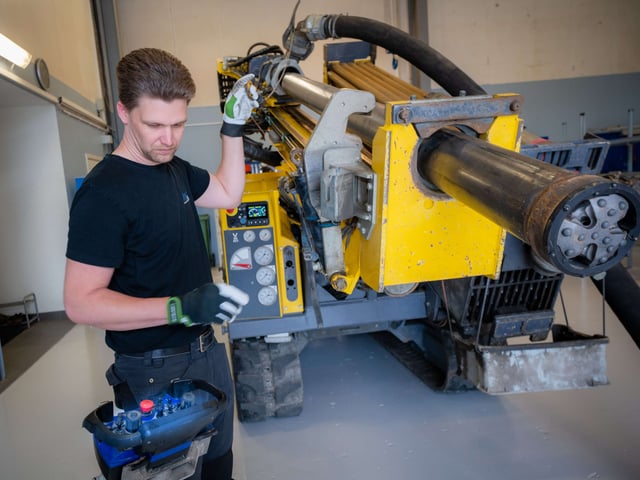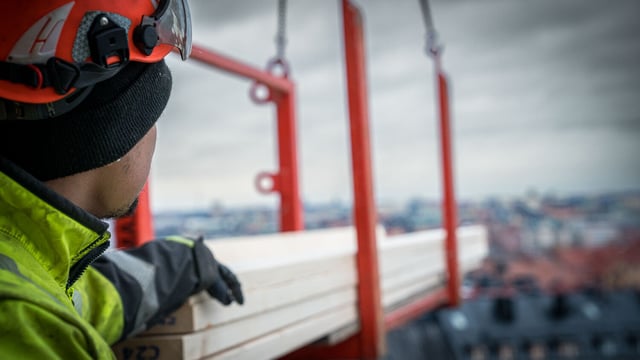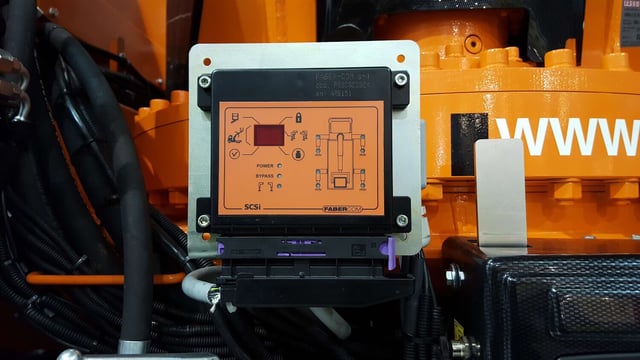Automation can be categorized as “mature” or “immature”. Immature automation aims to remove people entirely, but real-world machines are unpredictable—one dirty sensor can bring everything to a halt. To attract investors, some entrepreneurs hide all remotes, presenting futuristic robots guided by AI, infrared sensors, and drones. But here’s the catch: removing humans might seem efficient—they need breaks, food, and sleep. But when something goes wrong, the time saved during smooth operation is often lost in days of troubleshooting.
Instead of chasing full autonomy, let’s explore “mature automation”—an approach that keeps the operator in the loop, known today as Industry 5.0.
Competing with the big players
Your vision as a machine builder shapes how you respond to new demands. Even without the resources of industry giants, you can gain a competitive edge—not by chasing the same goals, but by working differently. One critical choice lies in how you design your systems: goal-driven vs. event-driven development.
Most automation projects follow a goal-driven path: define technical requirements, optimize performance, and meet system targets. It’s efficient—but often disconnected from the operator’s real-world experience. The result? Complex menus, unintuitive workflows, and a machine that works perfectly on paper—but not always in practice.
Event-driven development, on the other hand, starts from the operator’s perspective. It focuses on real events: What’s happening around the machine? How does the operator respond? What feedback is needed in that moment? It takes more time, more observation—and sometimes, muddy boots. But it leads to systems that feel natural, responsive, and human-centered.
Technologies may be shared across the industry—but the way you design around them is what sets you apart.

Operator Ryan Riddle adjusting parameters on the hydro demolition robot from Conjet
Why field studies matter
Automation projects often focus on replacing human input with machines. But true automation success isn’t about who controls what—it’s about how machines and humans work together.
Today, many systems follow a rigid "you do this, I do that" approach, treating automation as a direct substitute for human work. However, real-world environments are complex and unpredictable. Machines need cooperation, not isolation, to function effectively. This is where field studies make the difference.
When you observe operators in action, you learn how automation should assist them—not replace them. Research[1] suggests that successful automation systems share three key characteristics:
- Event-Based – Instead of overwhelming the operator with raw data, automation should highlight changes and key events in an intuitive way.
- Future-Oriented – Operators need to anticipate what’s coming next, not just see what has already happened.
- Pattern-Based – Humans excel at spotting patterns, so automation should present information in ways that make abnormalities easy to detect at a glance.
A well-designed system should behave like a good team player—its actions should be visible and predictable, and it should be easy to direct.
The goal isn’t too micro-manage automation but to enable operators to strategically oversee and adjust it as needed. Even fully autonomous machines still have human oversight at some level. Instead of designing systems that push operators further away, the focus should be on creating automation that keeps them in the loop—especially in unexpected situations. By investing in field studies and operator-focused design, you can develop automation that is not only smarter but also more resilient.

Conny Tångring at Conjet has a long experience on how to improve the interaction between the operator and their robots. They have a training program called ConjetU.
The changing role of the operator – and what it means for you
The person who spends the most time with your machine isn’t the buyer—it’s the operator. As more processes become automated, the operator’s role shifts from manual control to active monitoring, problem-solving, and decision-making. This change places new demands on both the operator and the machine—and by extension, on you as a machine builder. Higher levels of automation often require higher operator competence. That’s an opportunity: to support your customers with smarter interfaces, better feedback, and targeted training that builds trust in both your machine and your brand. When you design with the operator in mind, you don’t just deliver a product. You deliver a long-term relationship.
The future of automation
Automation is often seen as the solution to operator shortages. But perhaps the real question is: What kind of operators do we want to design for?
Autonomous machines have already begun to attract a broader and more diverse workforce—including more women—into traditionally male-dominated industries. At the same time, a new generation of operators expects modern, transparent, and engaging systems that help them stay in control, not feel left out.
For machine builders, this is more than a staffing issue—it’s a design challenge. The future of automation isn’t just about machines that do more. It’s about creating systems that make people want to be part of that future.

[1] These principles draw on research in cognitive systems engineering and human factors, particularly the work of David Woods, Erik Hollnagel, and Sidney Dekker on how humans and automation interact in complex environments.
See also:
Joint Cognitive Systems: Patterns in Cognitive Systems Engineering. Woods, D. D. & Hollnagel, E. (2006). CRC Press.
MABA-MABA or Abracadabra? Progress on human-automation coordination. Sidney W. A. Dekker, David D. Woods.
Human-centered automation: a matter of agent design and cognitive function allocation. Guy Boy.







